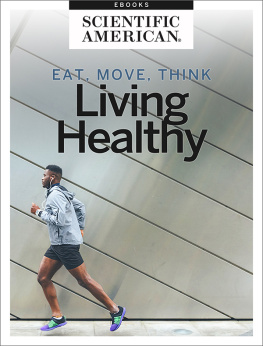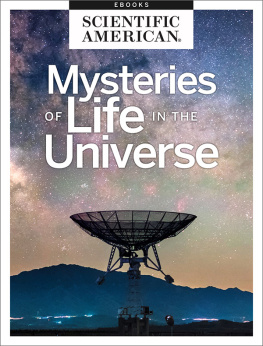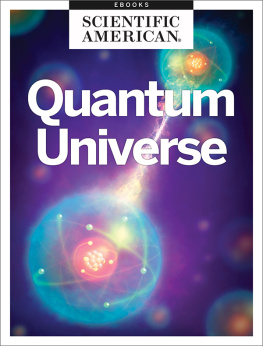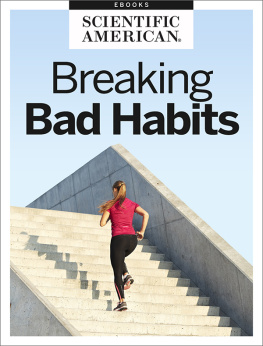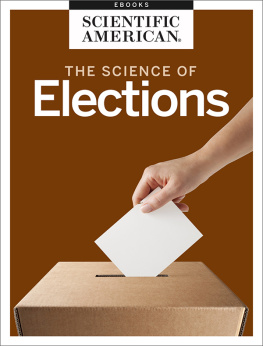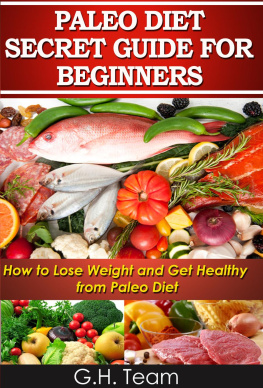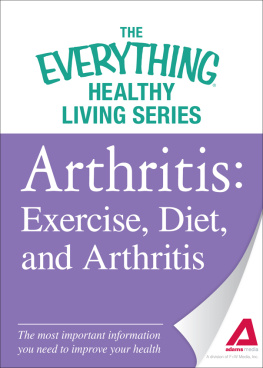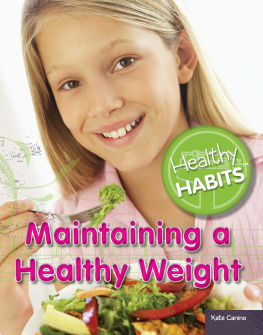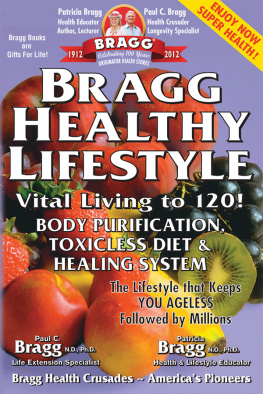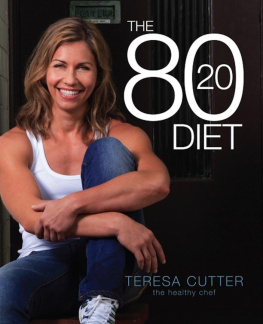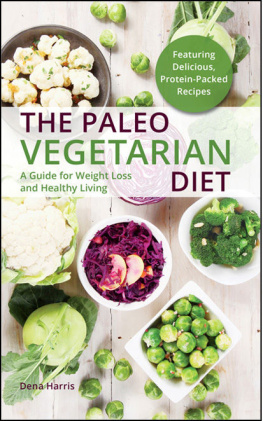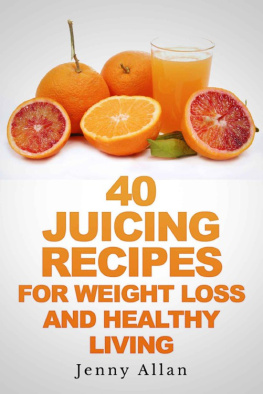EAT, MOVE, THINK
Living Healthy
From the Editors of Scientific American
Cover Image: Westend61/Getty Images
Letters to the Editor
Scientific American
One New York Plaza
Suite 4500
New York, NY 10004-1562
or editors@sciam.com
Copyright 2017 Scientific American, a division of Nature America, Inc.
Scientific American is a registered trademark of Nature America, Inc.
All rights reserved.
Published by Scientific American
www.scientificamerican.com
ISBN: 978-1-466833890


EAT, MOVE, THINK
Living Healthy
From the Editors of Scientific American
Table of Contents
Introduction
by Jeanene Swanson
Section 1
1.1
by Marion Nestle
1.2
by Karen Bellenir
1.3
by Melinda Wenner Moyer
1.4
by Ferris Jabr
Section 2
2.1
by Christine Rosenbloom and Luke Bucci
2.2
by Coco Ballantyne
2.3
by Katherine Harmon
2.4
by Melinda Wenner Moyer
Section 3
3.1
by Steve Mirsky
3.2
by Rose Eveleth
3.3
by W. Wayt Gibbs
3.4
by Paul Raeburn
3.5
by David H. Freedman
Section 4
4.1
by Melinda Wenner Moyer
4.2
by Katherine Harmon
4.3
by Maryn McKenna
4.4
by Sara Sklaroff and John Rennie
Section 5
5.1
by Melinda Wenner Moyer
5.2
by Hal Arkowitz and Scott O. Lilienfeld
5.3
by Arthur L. Klatsky
5.4
by Joseph R. DiFranza
Section 6
6.1
by Christopher Intagliata
6.2
by Christopher Intagliata
6.3
by Karen Hopkin
6.4
by Katherine Harmon
6.5
by Coco Ballantyne
Section 7
7.1
by Katherine Harmon
7.2
by Harvey Black
7.3
by Robert Epstein
7.4
by Erica Westly
7.5
by Jolanda Jetten, Catherine Haslam, S. Alexander Haslam and Nyla R. Branscombe
Introduction: Living La Vida Healthy
While many of us strive to live healthy lives, the task can be daunting and the information overwhelming. Should we be more concerned with our diet or with keeping our weight down? How important is exercise? What kinds of diseases should we really be worried about gettingor preventing?
In this eBook, Eat, Move, Think: Living Healthy , weve assembled a number of stories on what we think sums up a healthy lifestyle, as well as some of the common obstacles faced in trying to achieve it. We discuss what goes into a healthy diet, the efficacy of vitamins and supplements, the benefits of exercise and the importance of coping with mental stress. Because obesity cannot be ignoredit is increasing at epidemic rates worldwidewe devote an entire chapter to the subject. While lifestyle can be a component of many diseases, including cancer and heart disease, we chose to focus on diabetes alone in one chapter because, like obesity, it too is increasing rapidly.
Some would argue that diet is the cornerstone of healthy living. To that end we lead with a story by nutritionist Marion Nestle, who sums up what it means to eat right in her feature, Eating Made Simple. Other stories in Section 1 address the eight glasses of water a day myth and why carbs might be worse for you than fats. Section 2 delves into whether vitamin and herbal supplements improve health or not. One story by Katherine Harmon, Herbal Supplement Sellers Dispense Dangerous Advice, False Claims takes a hard look at how sales staff commonly perpetuate unsubstantiated claims by manufacturers through their own ignorance.
Obesity and diabetes are the topics of Sections 3 and 4. While critics dispute the claim that being fat is necessarily unhealthy, anecdotal and scientific evidence continue to show that both obesity and diabetes have reached or will reach epidemic proportions. In The World Is Fat: Obesity Outweighs Hunger Worldwide, Steve Mirsky interviews epidemiologist Barry Popkin, who discusses the fact that obesity is growing problem in developing countries. W. Wayt Gibbs questions the war on fat in his piece, An Overblown Epidemic? while Paul Raeburn discusses Can Fat be Fit?
While obesity may not cause diabetes, and vice versa, there has been an increase in prevalence of both. Then, after disease onset, diabetes can complicate both eating and physical activity. In Section 4, Melinda Wenner Moyer looks at "The Link Between Inflammation and Diabetes" while in Managing Diabetes, Sara Sklaroff and former editor-in-chief John Rennie examine how to care for the disease.
Section 5 checks into drinking, smoking, and prescription medicationscommonly addictive substances that pose serious health threats. In Hooked from the First Cigarette, Joseph R. DiFranza dissects the addiction to nicotinehow easy it is to become addicted and the neuroscience behind kicking the habit.Section 6 discusses both the physical and mental benefits of exercise. Finally, Section 7 digs into mental health problems, such as anxiety and depression, with stories on how to Meditate that Cold Away and how joining groups can reduce stress and promote health.
The key to living healthfully is making informed choices, whether those involve the food you eat, where to live, your ideal weight or how to stave off depression. Armed with the right knowledge, everyone can live a healthier lifeand that means a happier life.
-Jeanene Swanson
Book Editor
Eating Made Simple
by Marion Nestle
As a nutrition professor, I am constantly asked why nutrition advice seems to change so much and why experts so often disagree. Whose information, people ask, can we trust? I'm tempted to say, Mine, of course, but I understand the problem. Yes, nutrition advice seems endlessly mired in scientific argument, the self-interest of food companies and compromises by government regulators. Nevertheless, basic dietary principles are not in dispute: eat less; move more; eat fruits, vegetables and whole grains; and avoid too much junk food.
Eat less means consume fewer calories, which translates into eating smaller portions and steering clear of frequent between-meal snacks. Move more refers to the need to balance calorie intake with physical activity. Eating fruits, vegetables and whole grains provides nutrients unavailable from other foods. Avoiding junk food means to shun foods of minimal nutritional valuehighly processed sweets and snacks laden with salt, sugars and artificial additives. Soft drinks are the prototypical junk food; they contain sweeteners but few or no nutrients.
If you follow these precepts, other aspects of the diet matter much less. Ironically, this advice has not changed in years. The noted cardiologist Ancel Keys (who died in 2004 at the age of 100) and his wife, Margaret, suggested similar principles for preventing coronary heart disease nearly 50 years ago.
Old Advice Still Holds True
In 1959 Ancel and Margaret Keys offered the following familiar and still useful precepts regarding nutrition and activity:
Do not get fat; if you are fat, reduce.
Restrict saturated fats: fats in beef, pork lamb, sausages, margarine and solid shortenings; fats in dairy products.

